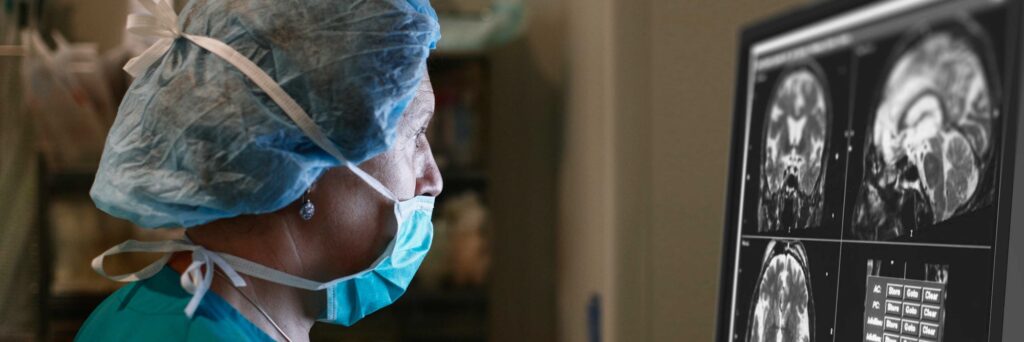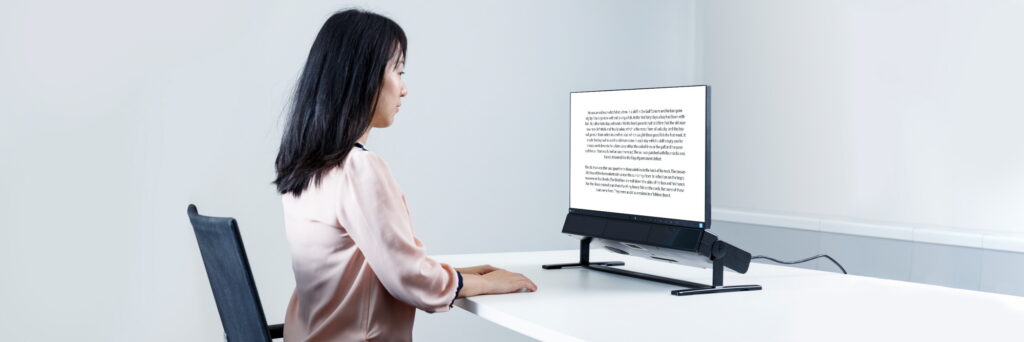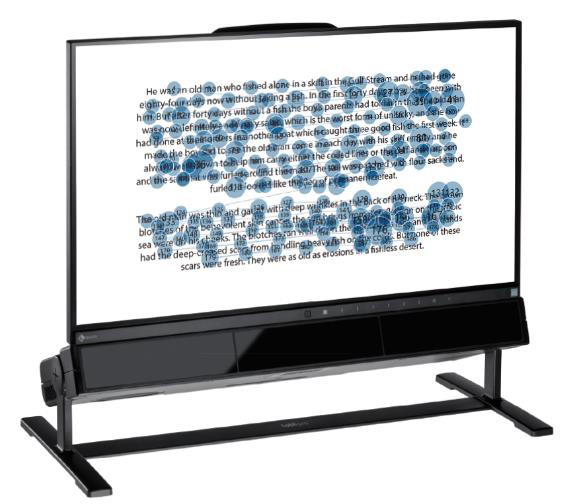
Clinical Research
Reducing variability and increasing efficiency
Eye tracking is an objective tool that increases the reliability and reduces the variability of eye tracking studies. Standardized and automated processes are more time and cost-efficient with our solutions. We give you the ability to quantify eye movement data, which makes comparison, follow-up, and progression studies more effective.
Eye tracking can improve existing clinical methods for screening and diagnostics when studying:
- Alignment, such as in strabismus or amblyopia (lazy eye)
- Fixation stability, smooth pursuit, or saccadic movements
- Visual field
- Pediatric vision issues
- Social interaction characteristics
Neurological diseases and brain injuries
Investigating the scan patterns and control mechanisms of eye movement can provide early indicators for conditions such as autism spectrum disorder, Alzheimer’s, and schizophrenia.
In research aimed at developing new means of screening neurological diseases, eye tracking paves the way for the investigation of markers (parameters that can indicate either normal function or disease). Automated assessment processes and the ability to quantify data provide new therapeutic follow-up opportunities for medical professionals. This makes it possible to follow disease or rehabilitation progression in an objective and measurable way.
Clinical areas of research include:
- Autistic spectrum disorder (ASD) and attention deficit hyperactivity disorder (ADHD)
- Cognitive decline, such as dementia, Alzheimer’s, Lewy body, and Parkinson’s
- Reading and learning difficulties, such as dyslexia
- Stroke and non-traumatic brain injury
- Amyotrophic lateral sclerosis (ALS)
- Schizophrenia
- Receptive language, expressive language, or cognitive functioning
Product and services
For clinical research, Tobii Pro offers solutions suited for labs and other controlled environments, as well as naturalistic settings in the home or the field. The eye tracking data can be synchronized and analyzed in a multitude of software environments depending on the specific needs of the researcher. Training and support for the hardware and software are provided globally.

The Tobii Pro Spectrum offers up to a 1200 Hz sampling rate with high spatial and temporal precision and accuracy. It tolerates large head movements, which opens up possibilities for unobtrusive research of oculomotor functions with active subjects, such as children or atypical populations (e.g. those with autism spectrum disorder). The Pro Spectrum allows you to study eye movements and behaviors such as saccades, micro-saccades, tremor, fixations, scan paths, and pupil dilation. Monocular calibration can be conducted through the Tobii Pro SDK.
The Pro Spectrum provides exceptional flexibility, accommodating a wide array of research scenarios and study designs. This system can be used with the provided screen or with the eye tracker alone, enabling research with both on-screen and real-world stimuli, such as physical objects or people.
Learn more about Tobii Pro Spectrum.
Screen-based eye tracker, capturing gaze data at speeds up to 250 Hz. The system supports from fixation to saccade-based research conducted in labs, as well as data collection outside of the lab.
Learn more about Tobii Pro Fusion.
A wearable eye tracking system for studying natural tasks in a lab or real-world environment. The system is lightweight and unobtrusive for capturing of the most genuine subject behavior. It is ideal for studies involving driving, playing sports, or doing any natural task.
Learn more about Tobii Pro Glasses 3.
Software
The Pro Spectrum works with Tobii Pro Lab, a versatile biometric software platform designed to meet the highest demands in different research scenarios with exact timing accuracy. This software supports the entire process – from test design and recording, to the interpretation and presentation of results while offering the ability to sync with other biometric data sources.
Stimuli can be shown on screen for as short as 50 milliseconds, making it suitable for research requiring very high precision in timing. When stimuli are presented, TTL signals are sent to sync the stimuli presentation and data recording with external research systems. This capability will allow researchers to ask more complex questions, for example, when adding eye tracking to their EEG research.
Tobii Pro SDK is available for researchers who wish to develop niche applications or scripts for use with the Pro Spectrum.
Learn more about Tobii Pro Lab.
Tobii Pro Services
A broad range of training services are available to help you get started in your eye tracking quickly wherever you are located. Our support team is distributed across the globe to assist you in different languages and time zones.
Learn more about Tobii Pro Services.

